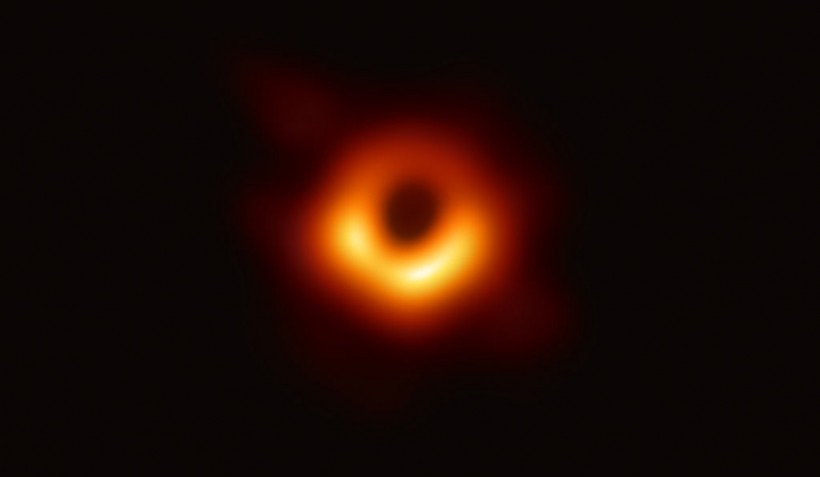Researchers in a new study detected a pair of supermassive black holes whipping around each other every two Earth years on average, with respective masses each of hundreds of millions of times that of the Sun.
As indicated in a Space.com report, the researchers found in this new research that the two gigantic black holes are "locked together by gravity" as they unavoidably spiral headed for a collision.
They also found that the two are relatively close, being just roughly 2,000 Earth-sun distances apart, for approximately 50 times the distance between the Sun and Pluto.
Describing the objects in a statement, the California Institute of Technology said when the two merge in approximately 10,000 years, the titanic collision is expected to "shake space and time itself," sending gravitational waves throughout the universe.
ALSO READ: Dark Matter Mystery Unveiled? Scientists Set Up Rigs to Uncover Subatomic Collisions

In this handout photo provided by the National Science Foundation, the Event Horizon Telescope captures a black hole at the center of galaxy M87, outlined by emission from hot gas swirling around it under the influence of strong gravity near its event horizon, in an image released on April 10, 2019.
The 2 Black Holes
Described in the statement as the tightest-knit supermassive black hole duo yet detected, the research published in Astrophysical Journal Letters offers a unique laboratory for better insight into the dynamics of quasar involved, known as PKS 2131-021.
Essentially, quasars are far objects powered by black holes one billion times as huge as the Sun. Astronomers are interested in these ultra-bright objects partly because quasars may provide an understanding of the physics of the early universe.
If such findings from this research are validated, PKS 2131-021 is not the only one to have a pair of supermassive black holes that merge. The first proposed pair is quasar OJ 287, although they are much further apart and take nine years to revolve around each other.
This study's authors used 45 years of observations from multiple radio observatories to capture a powerful jet in action within PKS 2131-021, appearing to be moving back and forth as "a pair of black holes" orbiting each other. In turn, the movement results in changes in the radio waves brightness observed on Earth.
Galaxy Mergers
In the same Caltech statement, the study's lead author Sandra O'Neill, also an undergraduate astronomy student there said, when they realized that the peaks and troughs of the light curve spotted from recent times matched the peaks troughs observed from 1975 to 1983, they knew "something special was going on."
Typically, galaxies have gigantic black holes in their centers, including the Earth's Milky Way. When they take place, Galaxy mergers tend to see their respective black holes sink to the center of the now-combined, new galaxy and develop an accordingly combined and immense supermassive black hole.
The impacts of such mergers are creating huge ripples throughout time and space, called "gravitational waves." Many times, these have been observed using the Laser Interferometer Gravitational-Wave Observatory, or LIGO of the National Science Foundation managed together by Caltech and the Massachusetts Institute of Technology.
Consequently, the supermassive black holes would not be visible to LIGO as they produce lower frequencies of gravitational waves that are not detectable by the sensors of LIGO.
According to Caltech researchers, the way to capture this in the future would be to use pulsar timing arrays pertaining to radio telescopes that look at blinking stars identified as pulsars. Meanwhile, light waves can exhibit supermassive black holes in action.
Information about the two black holes is shown on Leo Studio's YouTube video below:
RELATED ARTICLE: Short Gamma-Ray Bursts Originate From a Dying Star; Super Short GRB Recorded From Andromeda
Check out more news and information on Black Holes in Science Times.














